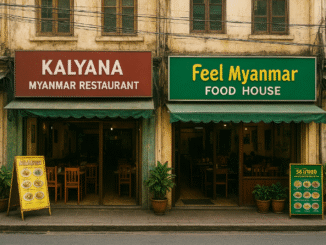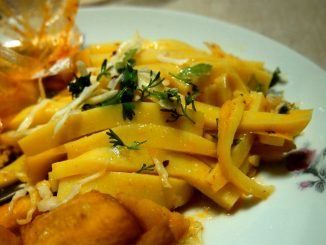
Thanakhar is a traditional cosmetic paste used predominantly in Myanmar. It is made from ground bark of certain trees, most commonly the thanakhar tree (Hesperethusa crenulata) and the wood-apple tree (Limonia acidissima).
Here are some key points about thanaka:
- Preparation and Application:
- The bark, wood, or roots of the thanakhar tree are ground on a flat, circular stone called a kyauk pyin with a small amount of water to produce a milky paste.
- This paste is then applied to the face, and sometimes the arms, in various patterns. Common patterns include circular patches on the cheeks, a stripe down the nose, or a more elaborate design.
- Benefits:
- Thanakhar is prized for its cooling properties and is believed to help protect the skin from sunburn.
- It also has astringent properties, which can tighten the skin.
- Some believe it has anti-fungal properties and can treat acne and other skin conditions.
- It provides a fragrant scent and a smooth texture to the skin.
- Cultural Significance:
- Thanakhar has been used for over 2,000 years and is deeply embedded in Myanmar culture.
- It is worn daily by many women and children and occasionally by men. It is often seen during festivals and cultural events.
- Modern Use:
- Today, thanakhar is available in various commercial forms, including powder, cream, and lotion.
- Despite modern beauty products’ availability, many Myanmar people continue to use traditional thanakhar for its natural benefits and cultural significance.
In summary, thanakhar is a natural cosmetic with historical, cultural, and skincare benefits, widely used in Myanmar.


